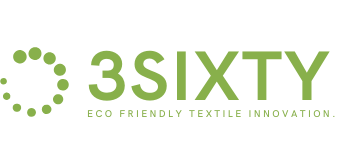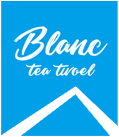Why Towel Digital Printing is important?
Digital printing has created an important revolution in the world’s textile industry in the last decade. Especially in the field of designing and responding to the fashion market, which requires rapid changes in the type of production and design required by the market. With digital printing, being up-to-date is much more accessible and easier for textile companies and manufacturing plants. Digital printing allows companies to provide a wide range of designs, colors and patterns to customers, and this is a great feature for businesses in today’s highly competitive textile market.
Perhaps the towel is one of the textile goods that was less noticed in the digital printing sector in the past, but today, with the diversification of the fashion market, it has been noticed in all sectors of the textile industry. Especially in the beach towel market, which becomes one of the best-selling products in the home textile sector when the summer season arrives. Today, all kinds of towels are produced with special designs for schools, companies, universities, sports clubs, gift items, etc., and digital printing is an excellent solution to meet all these needs.
Printing digitally on towels involves using specialized equipment and techniques to transfer digital designs onto towel fabric. Here’s a general overview of the process:
1. Digital Design: Prepare your design using graphic design software. Ensure it’s in a high-resolution format suitable for printing.
2. Digital Textile Printer: A printer designed for printing on fabric, preferably one that supports towels.
3. Textile Ink: Pigment or dye-sublimation inks suitable for fabric printing.
4. Blank Towels: High-quality, preferably white or light-colored towels made of fabric suitable for digital printing. normally for digital printing it’s better to have a white 100% Cotton Towel.
5. Heat Press: For setting the ink onto the fabric.

Steps to Print Digitally on Towels:
1. Design Preparation:
– Create your design using graphic design software like Adobe Photoshop or Illustrator. Make sure it’s in a high-resolution format (at least 300 DPI) to ensure a crisp print. vector artworks have better quality and result.
– Adjust the design dimensions to match the size of the towels you’ll be printing on.
2. Pre-treatment (Optional):
– Some towels require pre-treatment to improve ink absorption and color vibrancy. Follow the manufacturer’s recommendations for pre-treating the fabric.
3. Printing:
– Load the towel fabric onto the digital textile printer’s printing bed according to the manufacturer’s instructions.
– Make sure the printer is calibrated and the ink cartridges are properly filled with the appropriate textile ink.
– Print the design onto the towel fabric using the digital textile printer.
one of the best towel digital printing machinery providers is Zimmer Austria with more than 150 years of experience in the textile printing field. Setting up a digital towel printing production line requires a substantial initial investment, but it opens up significant opportunities to provide a wide range of colors and shades to your customers, especially in trendy markets such as the summer and beach towel markets.
4. Drying:
– After printing, allow the fabric to dry. Some printers have built-in drying mechanisms, while others may require you to air dry or use heat. one of the best textile dryer manufacturers for digital printed towels is Bruckner Textile.
The location of the dryer and the digital printing head should be in a continuous line, but separated by a heat insulation wall. Because digital printing machines show their best performance at a room temperature of around 25 degrees. If the dryer is not separated by an insulating wall, it is not possible to maintain a low temperature, especially in hot areas
5. Heat Fixation:
– To set the ink onto the fabric permanently, you’ll need a heat press.
– Place a protective sheet on the heat press to prevent direct contact between the printed design and the press’s surface.
– Lay the printed towel on the protective sheet, ensuring the design is positioned correctly.
– Apply heat and pressure according to the manufacturer’s instructions for the ink and fabric you’re using. This process usually involves several seconds of heat press application at a specific temperature.
6. Cooling and Quality Check:
– Allow the towel to cool after heat pressing.
– Check the print quality, color accuracy, and overall appearance of the printed design.
7. Post-Treatment (Optional):
– Some textile printing inks require post-treatment steps, such as washing the fabric to remove excess ink or chemicals. Follow the ink manufacturer’s guidelines. One of the best machinery for towel washing belongs to Biancalani Textile from Itay.
8. Final Inspection:
– Inspect the printed towels for any defects or inconsistencies. Make sure the design is vibrant, accurate, and well-aligned.
Remember that the specific steps and requirements may vary based on the type of digital textile printer, ink, and towels you’re using. It’s crucial to follow the manufacturer’s guidelines for both the printer and the ink to achieve the best results. If you’re new to digital textile printing, consider practicing on a few test towels before producing a larger batch.
The Different Towel Printing Methods
Digital printing: Digitally printed towels are towels created through the use of digital printing technology. This advanced printing technique employs a specialized printer capable of rendering high-resolution images and intricate designs directly onto the fabric of the towel. This process involves the use of inkjet or sublimation ink to transfer the desired image onto the towel. It’s like an inkjet printer on your desk, and normally print on 100% cotton towels. The digital printing process uses 4 different inks, cyan, magenta, yellow, and black (CMYK) that spray on the towel surface.
Sublimated printing: Sublimated printing could only work on polyester fabric. A sublimation printer is specifically engineered to transfer artwork onto an object in a gaseous state, utilizing a high-temperature heat press.
Various types of sublimation machines are accessible, including swing-away dye sublimation printers, single-press sublimation printers, clamshell press dye sublimation printers, calendar press dye sublimation printers, and others.
Screen printing: This method is widely used in the towel industry. the towels lays on a long table on top of the printing blanket. This blanket is typically a cotton or polyester cloth, water-proofed by a coating of neoprene rubber. If the fabric slips or deforms during printing, there is a loss of print definition. The towels are therefore usually pinned to the printing blanket, or stuck into it with a water-based gum or thermoplastic adhesive. The latter type coats the blanket surface but only becomes sticky when heat softens the polymer. The towel should be washed before using.
Fiberactive Printing: Fiber reactive printed towels allow designs to be printed edge to edge with no towel color limitations. Normally this towel printing method is used for 100% cotton towels and is preferred for high production volumes.
Fiber Reactive printing (dye process) originated in the early 1950’s and allows designs to be permanently injected into the fabric. It is a process where a discharge ink is used to distract the dye from the fabric and replace it with the die in the ink. The “reaction” process occurs when the ink is heated or steamed from the fabric which sets the dyes and allows for bright vibrant colors.
The Best Digital Printing Towel Manufactures
3SIXTY

3SIXTY is a company founded by an individual from the West of Ireland who became inspired to address the issue of plastic pollution after his twin boys found a plastic bottle on the beach and expressed concern for marine life. This event led the family to make efforts to reduce their plastic consumption.
The founder, with decades of experience in bathroom and bedroom textiles, began exploring the possibility of incorporating recycled plastic bottles into their products. After significant experimentation, they successfully created a formula that combined recycled plastic bottles with cotton, leading to the birth of 3SIXTY.
3SIXTY is dedicated to using recycled plastic bottles in their textiles to help prevent plastic waste from ending up in landfills and oceans. They believe in the circular economy as a means to contribute positively to the environment. Their mission is to produce eco-friendly, sustainable, and socially responsible textile products for the hospitality, retail, and promotions sectors.
Recognizing the urgent issue of plastic overuse, especially single-use plastics, 3SIXTY aims to leverage the textile industry’s potential to make a substantial impact on plastic recycling. They aspire to demonstrate that businesses in the hospitality and retail sectors can play a crucial role in addressing the global plastic pollution problem.
SHRINATH COTFAB

Shrinath Cotfab, founded in 2016, is a division of the Shrinath Group, a prominent player in the Indian textile manufacturing industry since 1971. The company is dedicated to environmental protection and sustainable resource usage while maintaining high working standards. They have built their plant in compliance with international standards.
Shrinath Cotfab offers digital printed towels at competitive prices, catering to both individual and bulk buyers. With their extensive industry experience, they are committed to delivering excellent service at every stage of the customer journey. Furthermore, as a successful manufacturer and exporter, they have a track record of regular exports to Europe, Australia, and the USA.
MÖVE

MÖVE textile printing is an advanced and innovative process that offers flexibility in designing and producing printed towels. Unlike imported products that only apply ink to the surface, MÖVE’s method injects ink deep into the towel’s weave. This results in towels with vibrant, high-contrast colors that remain exceptionally fluffy and durable.
In summary, MÖVE textile printing is a German-made solution that excels in quality and customization. Their process injects ink deep into towel weaves, resulting in visually stunning, durable, and soft towels suitable for various design requirements.
BLANC Tea Towel

BLANC Tea Towel, established in 1996, specializes in the digital printing industry with over 11 years of experience. They focus on producing 100% cotton digital printing products, including tea towels, beach towels, kitchen aprons, oven mitts, bags, T-shirts, and more.
Their extensive experience in digital printing is supported by a dedicated team that follows rigorous quality control processes to meet customer standards. BLANC Tea Towel has gained a solid reputation in the international market due to their competitive pricing, consistent product quality, and excellent customer service.
They have their own investment factories and collaborate with long-term, efficient, and reliable manufacturing partners to ensure prompt order fulfillment, maintain product quality, and meet delivery deadlines.
BLANC Tea Towel accommodates small-scale custom digital printing orders and offers OEM services, including custom design options.
Towel Supplier Dubai

This company specializes in wholesale custom towel production and supply in Dubai and other parts of the UAE. They emphasize the importance of towels in various daily activities, such as play, cooking, exercising, swimming, and bathing. They offer a wide range of towel options for different occasions.




















